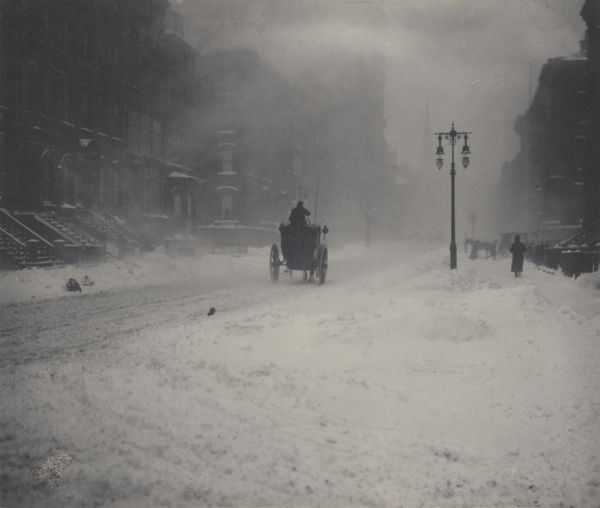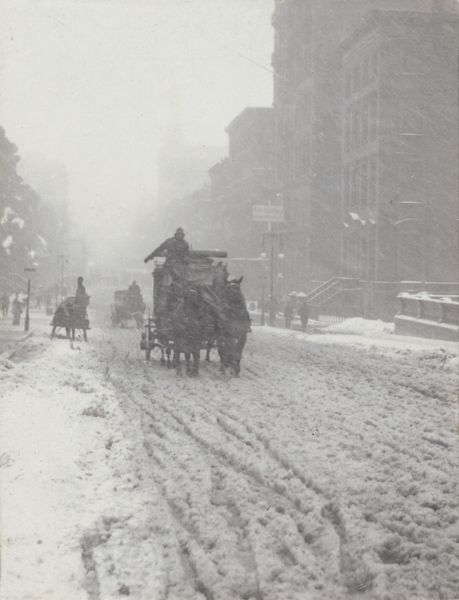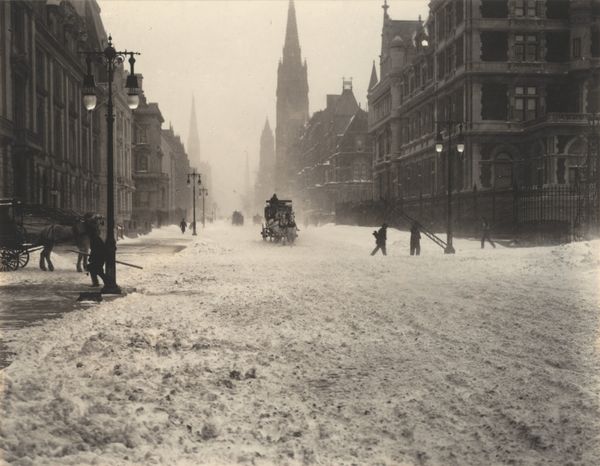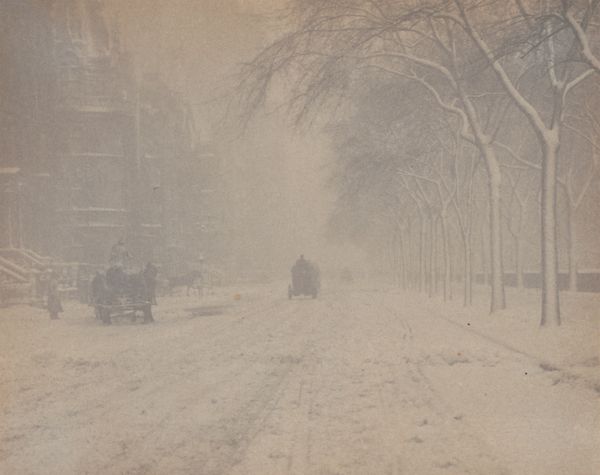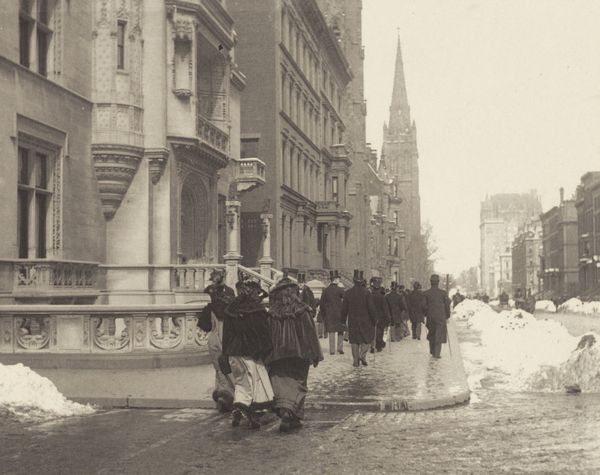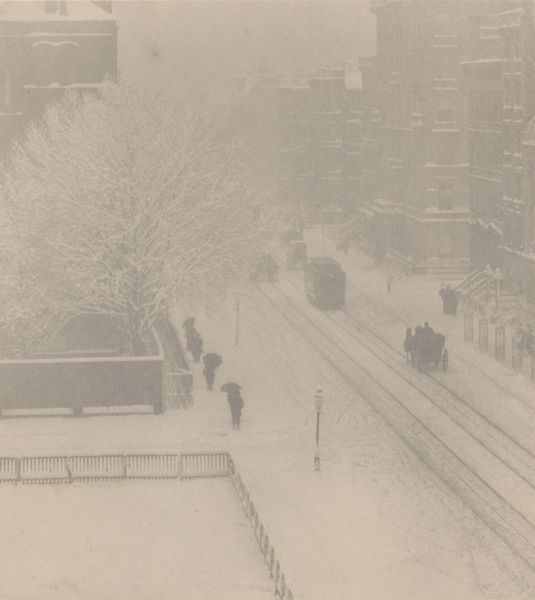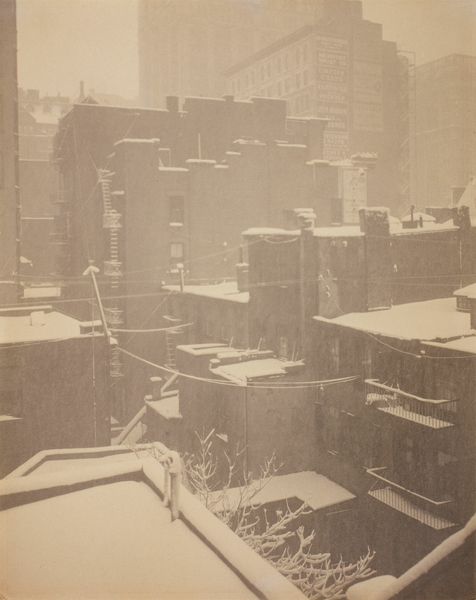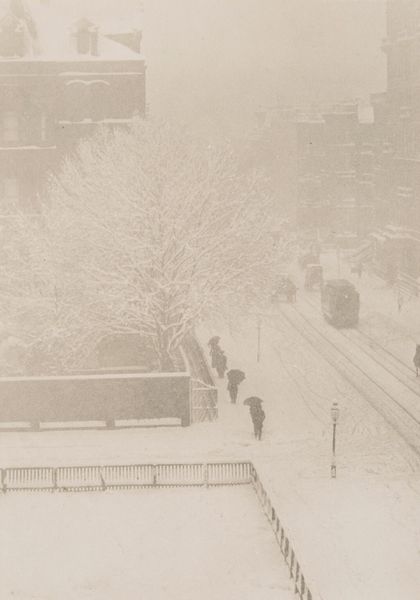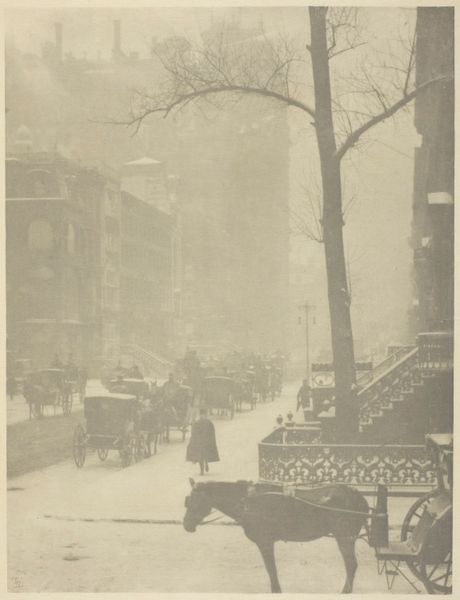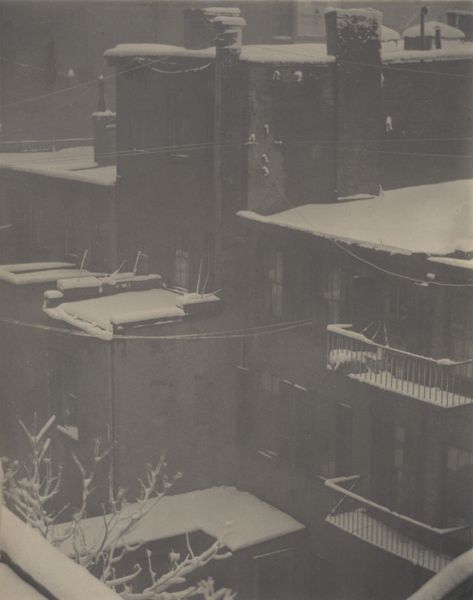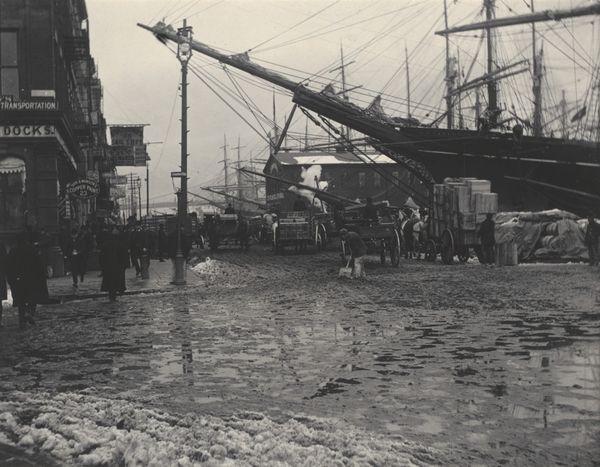
photography, gelatin-silver-print
#
black and white photography
#
pictorialism
#
street-photography
#
photography
#
gelatin-silver-print
#
monochrome photography
#
cityscape
#
monochrome
#
modernism
#
monochrome
Dimensions: image: 9.5 x 11.9 cm (3 3/4 x 4 11/16 in.) sheet: 10 x 15.1 cm (3 15/16 x 5 15/16 in.) mount: 31.2 x 24.8 cm (12 5/16 x 9 3/4 in.)
Copyright: National Gallery of Art: CC0 1.0
Curator: Here we have Alfred Stieglitz's gelatin silver print, "Winter, New York," a pictorialist scene likely captured sometime between 1893 and 1932. Editor: Stark. The overwhelming sense is of the grit it must take to live and work in a landscape so dominated by the elements. Curator: Stieglitz was deeply involved with Pictorialism, a movement which argued that photography could be just as much art as painting or drawing. Think of photography as impressionistic, rather than documentary. Editor: Look at how he makes the materiality of the snow palpable; you can almost feel the slush and see the tracks left by the carriages and people forging their way through. There’s a real sense of labor here. What were the conditions of photographic production for Stieglitz? Was this accessible, in terms of both skills and materials? Curator: Absolutely not readily accessible, and his social class afforded him the ability to experiment. In this image, the snowdrifts and the starkness—the bare trees implied behind that tobacco advertisement on the building--evoke a sense of isolation and resilience, right? Editor: Exactly. I’m curious about the social implications too. The photo depicts a city street but focuses solely on those navigating through harsh conditions to simply get from point A to point B. I can’t help but consider the socioeconomic divides present then. Curator: Interesting—because on the other hand, consider how powerful snow and the impact of winter were in the symbolic imagination of late 19th and early 20th century Western society. This is a purification, almost. The world is cleansed by a fresh start. Editor: Yes, and seeing it now reminds us that the constant negotiation between our industrial world, built of brick and advertisements, and the sublime force of nature is continuous. What materials will future artists have at their disposal to document our relationship to our changing environment? Curator: Perhaps Stieglitz sought to express something about the human condition more broadly, using the specific language of New York City as a backdrop for universal emotions and struggles. Editor: Agreed, although thinking about photography only in terms of "universal emotion" veils the socioeconomic framework that underpins his artistic practice. It can, nonetheless, still invite reflection.
Comments
No comments
Be the first to comment and join the conversation on the ultimate creative platform.
